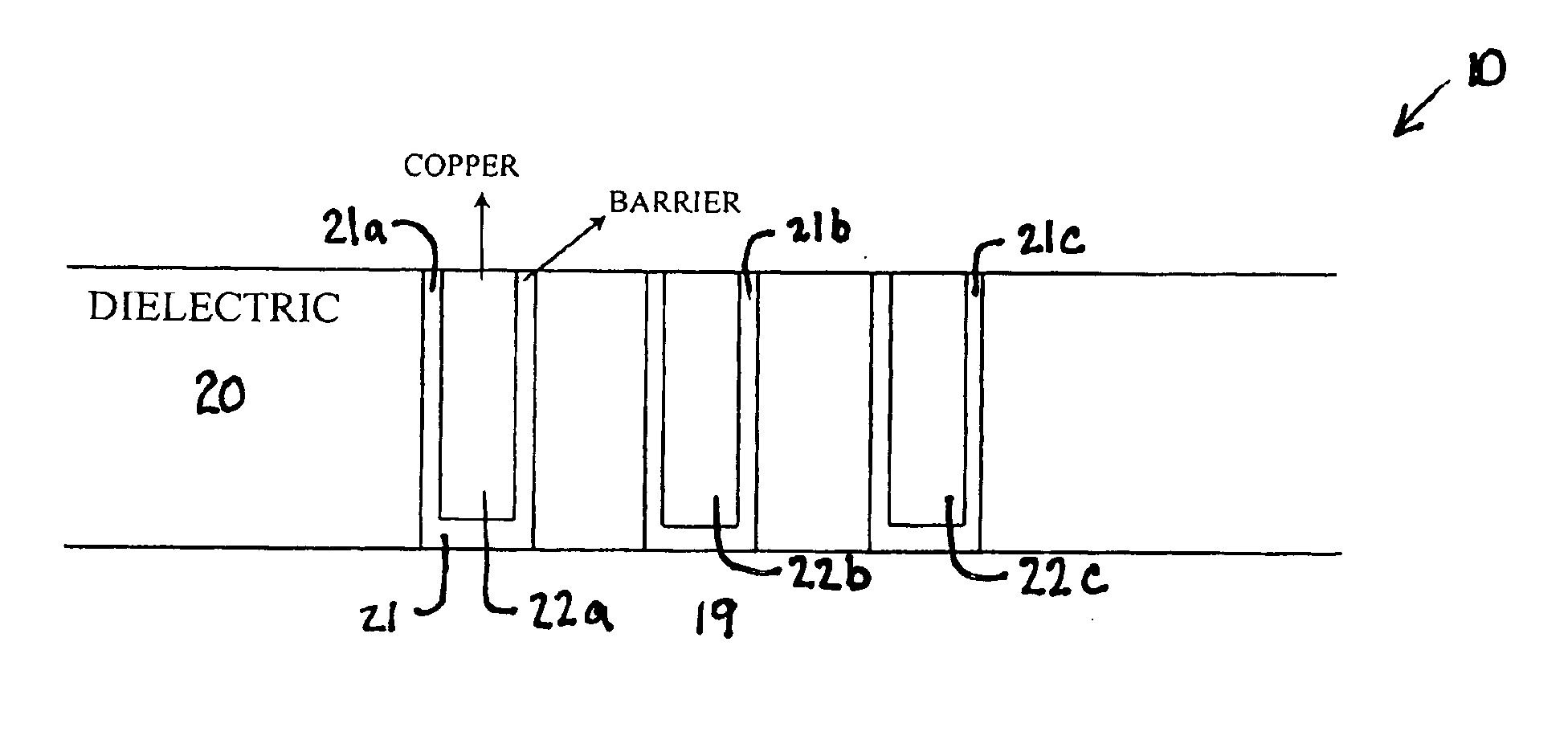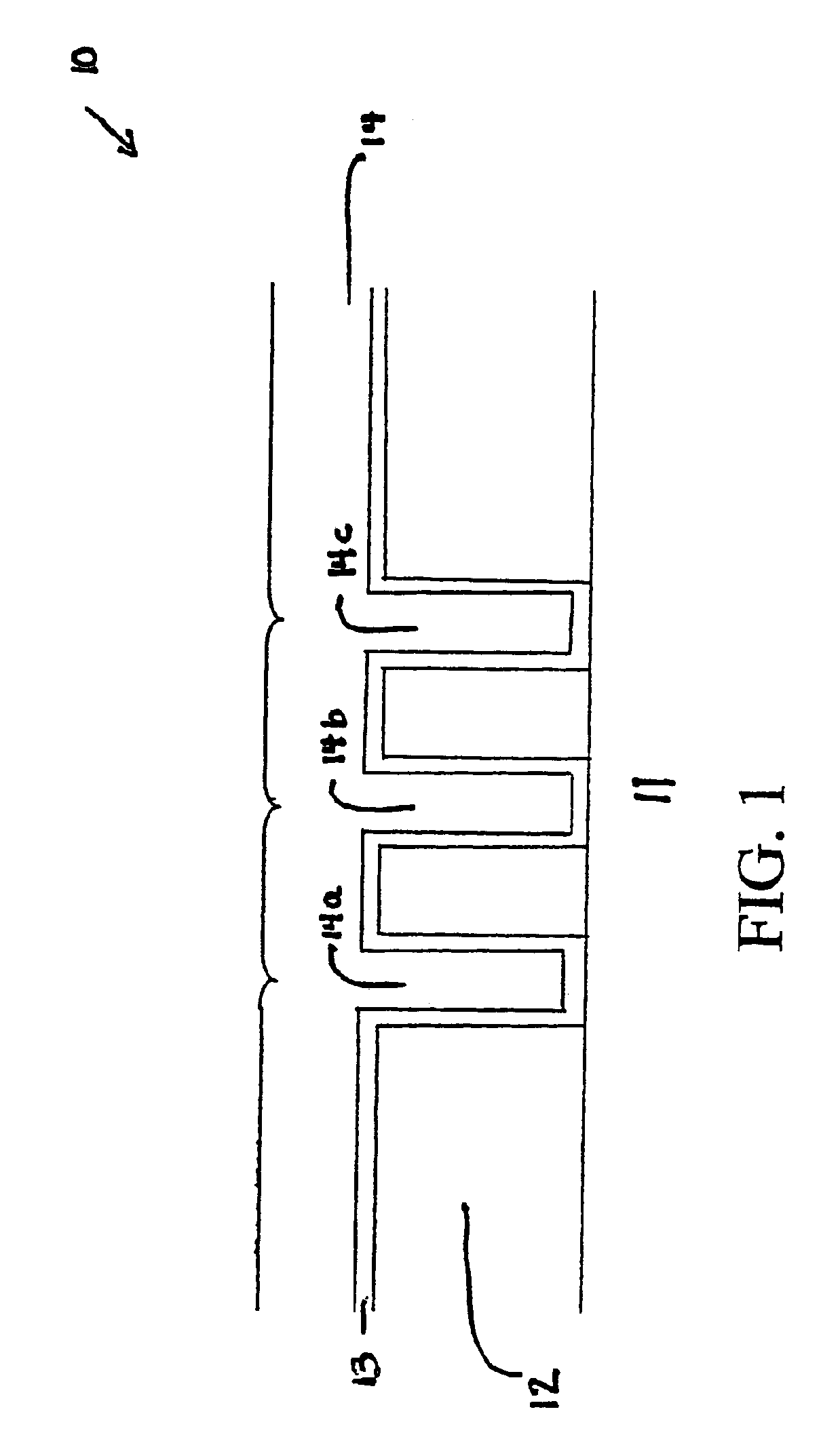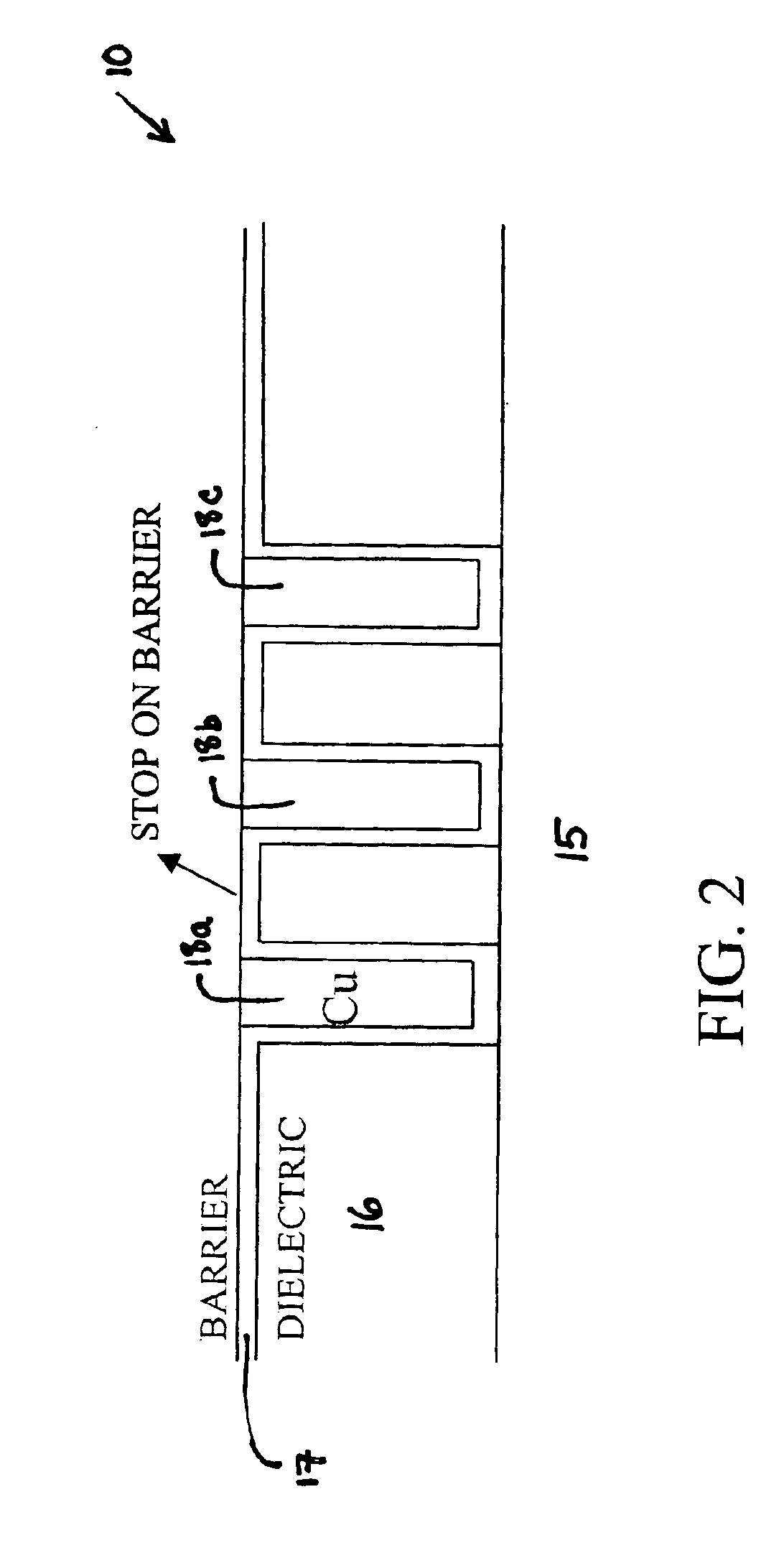Polishing slurries for copper and associated materials
- Summary
- Abstract
- Description
- Claims
- Application Information
AI Technical Summary
Benefits of technology
Problems solved by technology
Method used
Image
Examples
example i
[0041]Precipitated silica mean particle sizes of 8 nm, 20 nm, and 70 nm were tested. The fumed silica particle size tested was less than 700 nm. The optimum CMP slurry, including the first and second slurry, had a precipitated silica mean size of less than about 100 nm. The optimum fumed silica abrasive mean size for the first slurry is less than about 700 nm. The optimum CMP slurry formulations contain 1-10% precipitated silica, or fumed silica for the first slurry.
[0042]Further, different types of abrasive particles were studied to maximize the removal and selectivity characteristic of the slurry. Precipitated silica abrasives, with mean size distributions of 4 nm, 8 nm, 13 nm, 20 nm and 70 nm were tested. FIG. 6 shows a TEM picture of 13 nm slurry. The size distribution of these particles is presented in FIG. 7. Fumed silica, with a mean particle size of less than about 700 nm, was also evaluated. All of these mean size distributions can be used to achieve effective polishing rat...
example 2
[0043]Different pH ranges were tested for the first and second slurries (See Table 2 and 3). The precipitated silica abrasives had a starting pH range of 9-11 and the fumed silica had a starting pH range of 2-7. The optimum CMP slurry was found to be acidic. Thus, the pH ranges were altered to the 2 to 5 range by adding potassium, sodium or ammonium hydroxide in appropriate amounts to solutions of iodic acid, cleaning agent and corrosion inhibitor.
example 3
[0044]Several formulations of the first slurries were prepared. The characteristics of these formulations are described in Table 2. The first slurry is optimally comprised of formula 5, for colloidal silica particles, and formula 19 for fumed silica particles. Thus, the first slurry is preferentially comprised of 1-10% colloidal silica with particle size 3 to 100 nm, or 1-5% fumed silica with mean particle size of less than about 700 nm. Further, the active chemistry for the optimum first slurry is about 1-12% potassium iodate (KIO3, formed by reaction of HIO3 with KOH), which is used as the oxidizing agent for the copper, about 0-5% concentrated inorganic acid as a copper activating agent, and 0-2% iminodiacetic acid (IDA) as the copper corrosion inhibitor and cleaning agent.
[0045]
TABLE 2Formulations for the First SlurryCopperCopperThermalTantalumOxidizer,Inhibitor,Activator,Neutralizer,Abrasive,OxideCopperTantalumNitrideFormula%%%%%pHRR*RR*RRRR 1HIO3,IDA,H3PO4KOHColloidal2.4—3176—...
PUM
 Login to View More
Login to View More Abstract
Description
Claims
Application Information
 Login to View More
Login to View More - R&D
- Intellectual Property
- Life Sciences
- Materials
- Tech Scout
- Unparalleled Data Quality
- Higher Quality Content
- 60% Fewer Hallucinations
Browse by: Latest US Patents, China's latest patents, Technical Efficacy Thesaurus, Application Domain, Technology Topic, Popular Technical Reports.
© 2025 PatSnap. All rights reserved.Legal|Privacy policy|Modern Slavery Act Transparency Statement|Sitemap|About US| Contact US: help@patsnap.com



